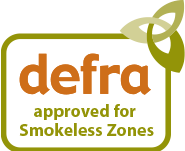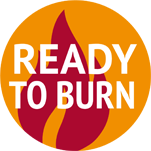What is a wood-burning stove?
A wood burning stove is a heating appliance designed to burn wood fuel for the purpose of providing heat to a living space.
It is commonly used for residential heating and offers an energy-efficient and environmentally friendly alternative to traditional heating methods.
What are the benefits?
- Energy efficiency: Wood stoves can provide efficient heat production, often with high combustion efficiency.
- Cost savings: Wood fuel is generally cheaper than other heating options, potentially leading to reduced energy costs.
- Renewable energy source: Wood is a renewable resource, making it an environmentally friendly heating choice.
- Backup heating: Wood stoves can provide heat during power outages, ensuring continuous comfort.
How does a wood burning stove work?
Wood burning stoves operate by burning wood fuel in a controlled combustion process. Air is drawn into the stove through vents, and the combustion process releases heat, which is then transferred to the room through the stove's outer casing and sometimes a fan or blower.
What woods can be used as fuel?
Hardwoods like oak, maple, and cherry are excellent choices as they burn slowly and produce more heat. Softwoods like pine and fir burn faster and are good for quickly warming up a space, but they may produce more creosote buildup in the chimney.
For more detailed information on the environmental impact of wood-burners, click below

How do I maintain my wood-burning stove?
Regular maintenance is important for safety and efficiency. Make sure to:
- Clean the ash and soot build-up from the stove regularly.
- Inspect and clean the chimney to prevent creosote build-up and potential chimney fires.
- Check door seals and gaskets for proper functioning.
- Have a professional inspect and clean the chimney annually.
Further questions
Absolutely. Here are some key safety tips:
- Install carbon monoxide detectors and smoke alarms.
- Use proper hearth protection to prevent accidental fires.
- Keep flammable materials away from the stove.
- Supervise children and pets around the stove.
- Use appropriate tools to handle hot surfaces.
It's recommended to have a professional install your wood burning stove. Firefly have a very experienced team who can install and advise on all aspects of your wood-burning stove requirements. Proper installation is very important and ensures safety and compliance with local building codes and regulations.
Many wood stoves are designed with flat surfaces on top that can be used for cooking. Some models even have dedicated attachments for cooking. However if you are unsure, it is always best to check the manual and ask your supplier for more information before starting any cooking!
While wood is a renewable resource, the combustion process releases carbon dioxide and particulate matter into the air. Choosing a modern, EPA-certified stove and burning seasoned wood can minimize environmental impacts.
Yes, it's often possible to retrofit an existing fireplace with a wood burning stove insert. This can improve efficiency and heat output.
Burning trash or treated wood can release harmful chemicals into the air and damage the stove. Only burn properly seasoned, untreated wood in a wood burning stove.
Remember that specific regulations, guidelines, and best practices may vary based on your location, stove model, and other factors. Always refer to the manufacturer's instructions and consult with professionals when in doubt.
Please get in touch if you have any further questions, we'd be delighted to hear from you.








